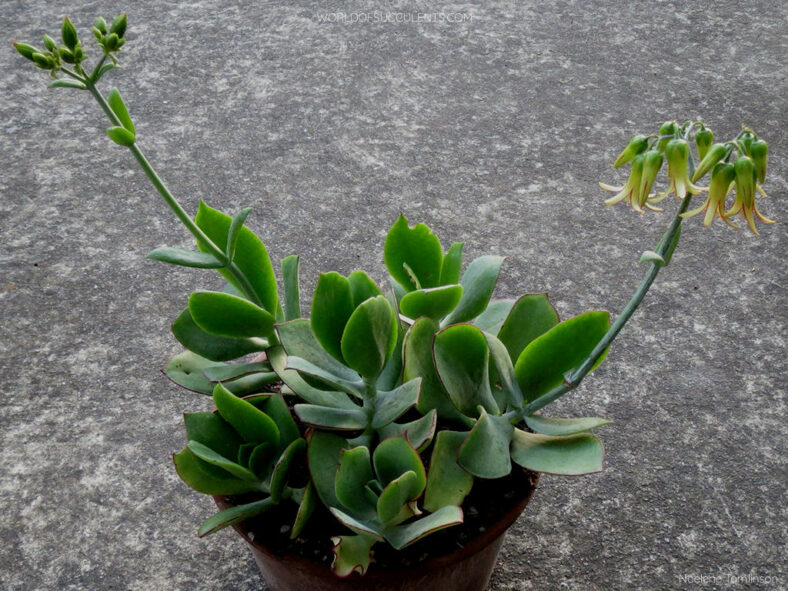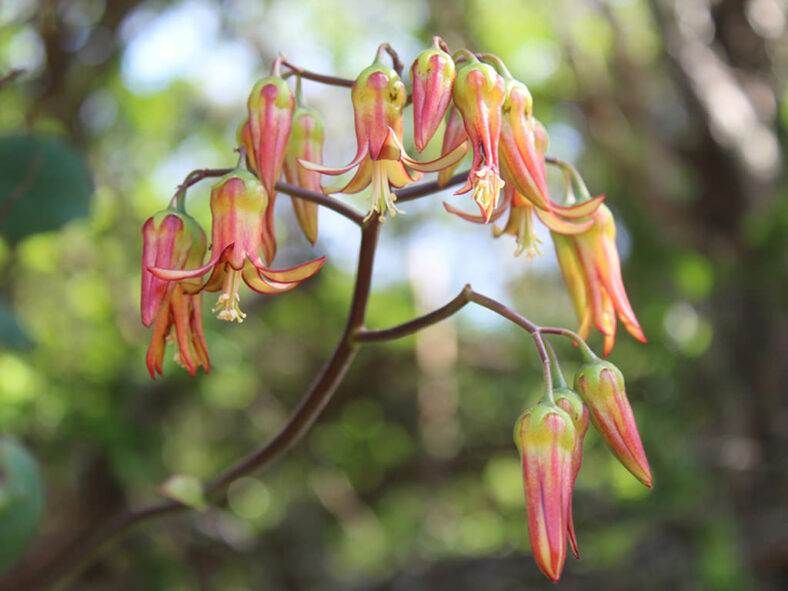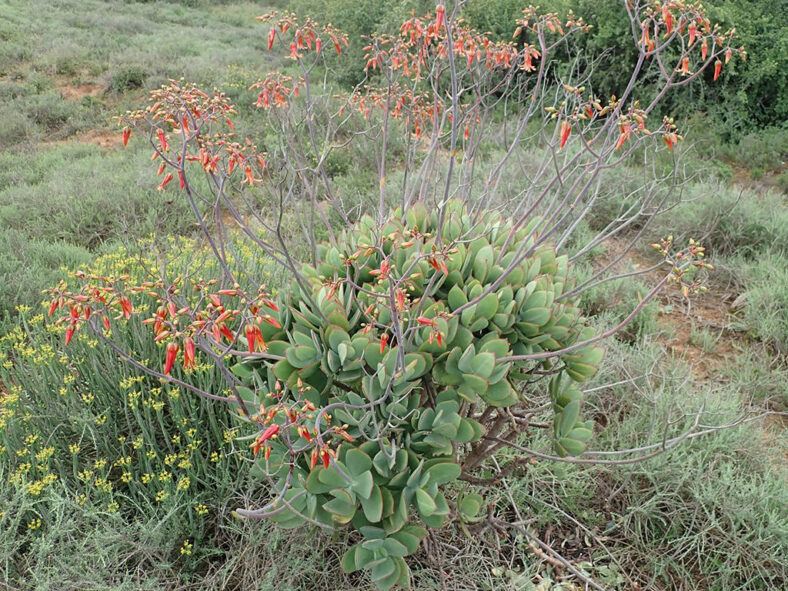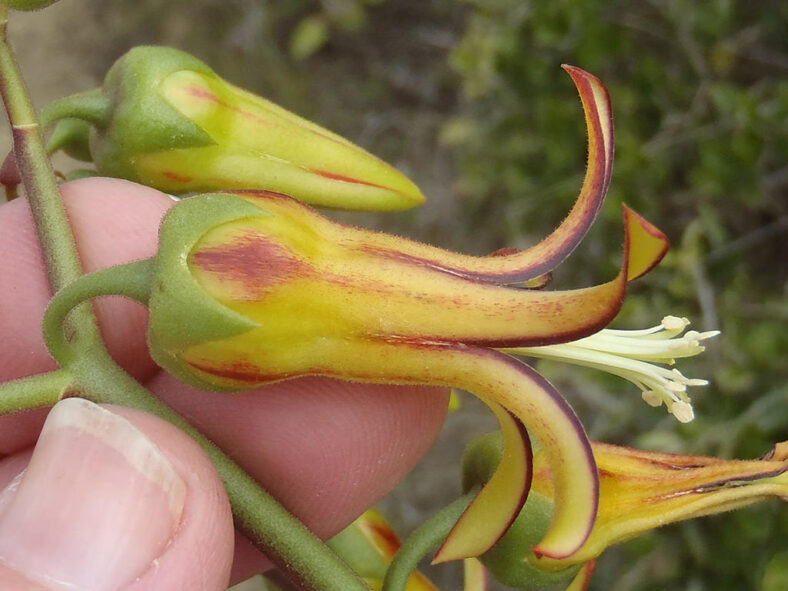Scientific Name
Cotyledon velutina Hook.fil.
Common Name(s)
Velvet Cotyledon, Pig's Ears, Velvet Pig's Ears
Synonym(s)
Cotyledon beckeri, Cotyledon mollis, Cotyledon velutina var. beckeri
Scientific Classification
Family: Crassulaceae
Subfamily: Kalanchoideae
Genus: Cotyledon
Etymology
The specific epithet "velutina (pronounced vel-oo-TEE-nuh) means "velvety" and refers to the sometimes velvety surface of the leaves.
Origin
This species is native to South Africa. It occurs from Willowmore in the Eastern Cape to southern KwaZulu-Natal and grows in stony soils, usually associated with larger scrub communities.
Description
Cotyledon velutina is a little branched succulent shrub with erect to erectly spreading branches with opposite, smooth to more or less hairy leaves. It can grow up to 10 feet (3 m) tall and appears to be the largest species in the genus. The branches are woody at the base, have purplish-brown bark peeling in older plants, and can reach up to 1.8 inches (4.5 cm) in diameter. The leaves are oblanceolate, rarely obovate, measuring up to 5.4 inches (13.5 cm) long and 3.2 inches (8 cm) wide. They are green to greyish-brown, sometimes with reddish margins towards the apex.
The attractive nodding flowers are tubular with five spreading to recurved terminal lobes, copper-colored or orange, often with yellow margins, and appear in mid-summer arranged in clusters on stalks that can grow up to 2 feet (60 cm) tall. The tube is bottle-shaped to almost cylindrical, measuring up to 0.7 inches (1.7 cm) long.

How to Grow and Care for Cotyledon velutina
Light: This succulent is somewhat flexible but grows and blooms best in full sun. Indoors, keep it near a sunny window or under a grow light.
Soil: A well-draining soil mix is key to a healthy C. velutina. Poor drainage and overwatering cause root rot in both indoor and outdoor plants. Use a commercial soil mix for succulents, or make your own.
Temperature: Like all Cotyledon, this plant is tolerant of high temperatures and cool, frost-free conditions during the winter if kept dry. C. velutina can withstand temperatures as low as 20 °F (-6.7 °C). USDA Plant Hardiness Zones 9a to 11b, 20 to 50 °F (-6.7 to 10 °C).
Watering: Follow general succulent watering procedures. During the growing season, water deeply enough for the water to run out of drainage holes, then wait for the soil to completely dry before watering again. Reduce watering during winter.
Fertilizing: Feed once or twice during the growing season with a fertilizer for succulents diluted to half the strength recommended on the label.
Repotting: You do not need to repot this plant often. Repot it when you see that the pot becomes too small or shallow. Use pots with at least one drainage hole at the bottom.
Propagation: C. velutina can be propagated by stem cuttings, mature leaves, or seeds. Sow the seeds in fall and winter, while the best time for taking cuttings is fall.
Learn more at How to Grow and Care for Cotyledon.
Toxicity of Cotyledon velutina
C. velutina is toxic if consumed. Therefore, keep it away from children, pets, and livestock.
Links
- Back to genus Cotyledon
- Succupedia: Browse succulents by Scientific Name, Common Name, Genus, Family, USDA Hardiness Zone, Origin, or cacti by Genus
Photo Gallery
Click on a photo to see a larger version.


